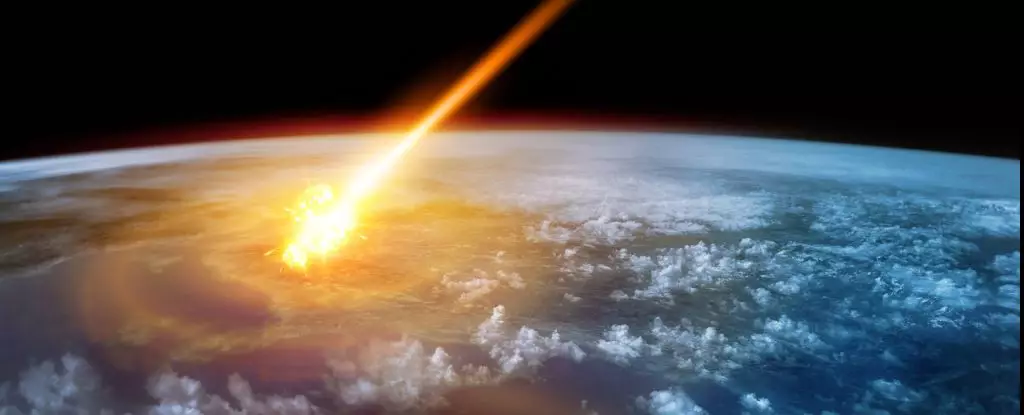In an extraordinary scientific revelation, a team of researchers has unearthed the oldest meteorite impact crater on Earth, located in the Pilbara region of Western Australia. This ancient formation, dating back over 3.5 billion years, stands as a monumental testament to our planet’s geological history and offers new insights into the origins of Earth’s first continents. The significance of this discovery, published in *Nature Communications*, cannot be overstated; it not only marks a profound accomplishment in the field of geology but also invites a reevaluation of long-held theories pertaining to continental formation.
The crater’s formation predates the previously known oldest crater by a staggering billion years. This remarkable age aligns with existing theories regarding the genesis of early land masses, igniting a fascinating dialogue among geologists. While the scientific community has largely agreed upon the essential role of these ancient landforms in facilitating early chemical and biological processes, the mechanisms by which they emerged have long been a source of contention.
Unraveling the Mysteries of Early Earth’s Geology
The prevailing theories concerning the formation of these primordial continents seem to hinge on two primary concepts: one posits that they arose from hot mantle plumes, while the other suggests a process more akin to modern plate tectonics. The former likens the emerging land to wax bubbling in a lava lamp, while the latter compares the movements of Earth’s crust to collisions seen in contemporary geological formations. Both explanations are strikingly dissimilar yet share a common trigger—the dissipation of heat from within Earth’s interior.
However, the researchers behind this new discovery advocate for an alternative perspective. They propose that the impact craters played a pivotal role in shaping the continental crust. As meteorites struck the surface, they not only pulverized vast swathes of rock but also melted surrounding materials, creating what the researchers term “volcanic blobs.” These formations eventually contributed to the development of continental crust, suggesting that all impacts could have fundamentally influenced our planet’s landscape.
The Journey to Discovery
Revealing the crater required extensive fieldwork, beginning with a two-week expedition from Perth to the Pilbara region. This journey was marked by determination and strategic planning, with specific geographical formations, such as the Antarctic Creek Member, earmarked for exploration. Comprising predominantly sedimentary rocks, this unique layer also contained spherules—small glassy droplets produced during high-energy meteorite impacts.
Despite their minuscule size and the apparent randomness of their distribution, these spherules hinted at a larger story beneath the surface. Initial suspicions regarding the existence of a buried crater compelled the researchers to meticulously analyze aerial maps and geological surveys, ultimately guiding them into the heart of their exploratory quest. Their collaboration with the Geological Survey of Western Australia (GSWA) was instrumental as they embarked on this scientific odyssey.
Upon arriving on-site, the researchers worked independently, their enthusiasm invigorated by a shared hope of uncovering the impactful remnants of ancient cosmic encounters. What they discovered was nothing short of extraordinary: shatter cones, unique geological formations resulting from shockwaves generated by meteorite impacts, adorned the landscape, leading them to realize that they had stumbled upon a significant ancient impact site.
From Discovery to Validation
Having identified the shatter cones, the team meticulously collected samples and documented their findings. However, scientific inquiry is rarely a linear path, and subsequent analysis was required to ascertain the precise age of the crater and substantiate their claims. This initiated a return to the site in May 2024 for a more detailed investigation.
Over the course of ten more days, the researchers diligently traced the Antarctic Creek Member, collecting additional evidence and compelling insights along the way. The overwhelming presence of shatter cones throughout this rock layer reinforced their hypothesis: the crater was indeed as ancient as the rocks they were studying. Confirming that it was synchronous with the 3.5-billion-year-old Antarctic Creek Member placed this discovery firmly within the record of Earth’s geological history, forever altering previous conceptions of ancient impact structures.
Ultimately, this groundbreaking find not only posits significant challenges to previously held assumptions within the geological community, but it also opens new avenues for research regarding the role of meteorite impacts in shaping our planet. By casting light on the interactions between cosmic events and terrestrial processes, the research team lays the groundwork for continued exploration into the dynamic history of Earth, re-establishing the importance of impacts as a crucial factor in the evolution of the planet we call home.


Leave a Reply